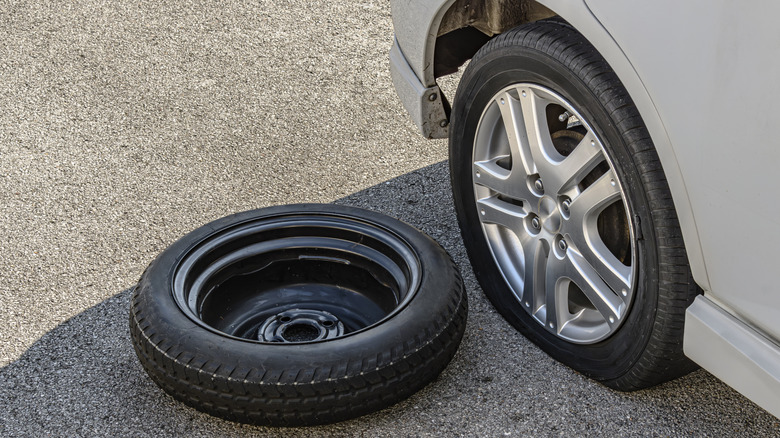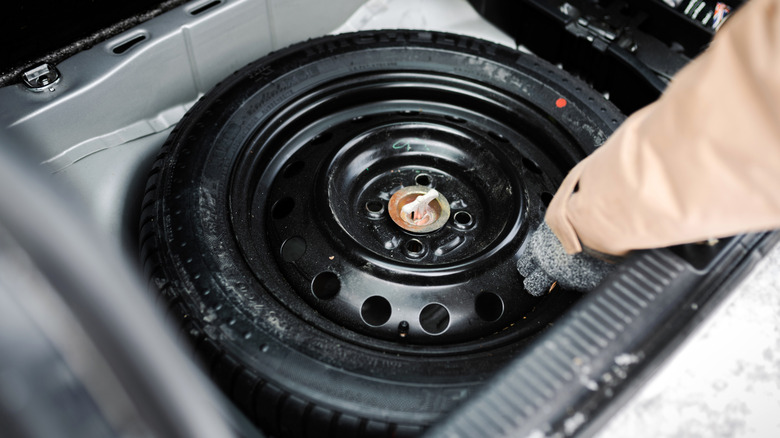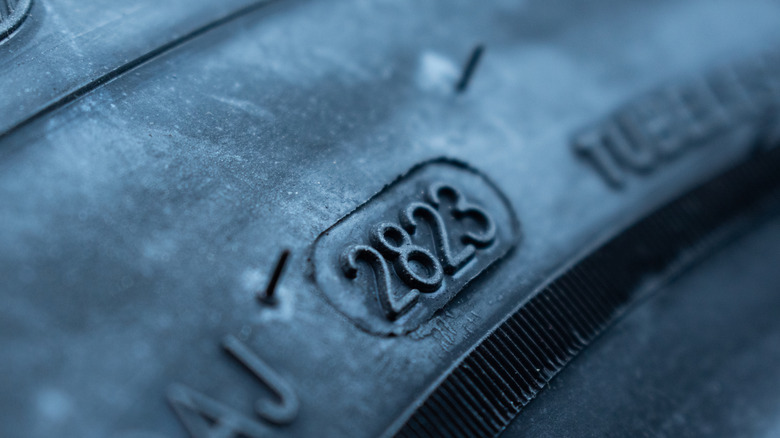Do Spare Tires Expire? Here's How Often They Need To Be Replaced
Knowing how long new tires should last is incredibly important, regardless of how often you drive your car. Those who cover a lot of miles are likely to wear their tires down, and will change them according to when the tread gets too low. In comparison, drivers who only cover short distances each year will be more likely to change their tires according to their age. Tires begin to crack as they go brittle with age, which is just one of the crucial ways to know when your tires need changing.
As a general rule, tires should be at least inspected every six years, and then replaced if any signs of wear, failure, or bad tire health are displayed. Building upon that, tires should absolutely be replaced after 10 years, regardless of tread depth or visual condition — so this can be considered the expiration date of a tire.
However, what about the spare tire? How should motorists know when to change their spare, and do they expire like regular tires, or are they OK to let age, as they are only used in an emergency situation anyway? The answer is yes, spare tires do expire, and you should treat them with the same care and consideration as you treat regular wheels and tires.
Your car's spare tire will expire at 10 years old
According to Ryan Pszczolkowski, the Tire Program Manager at Consumer Reports, "Unless specified, you should get a new spare tire at 10 years to ensure it is safe to use", and "You should inspect your spare tire periodically to look for any cracking or dry rot". The advice is clear then, there are no different rules for spare tires in terms of expiration, and they should be treated the same as the other tires on your car, and replaced at an absolute maximum of 10 years old.
This makes perfect sense, as, even though the spare tire may never get used, and if it does, only used for a few short miles to get you home or to a repair shop, it still needs to be in a perfectly safe and roadworthy condition. If you did keep an out-of-date or poor-condition spare tire, and had to use it to limp home after a blowout on the highway one day, you'd' not only be putting yourself and your occupants at risk, but other road users too, which is why it's imperative to keep a good-condition spare, and be aware of its age.
Here's how and when to inspect your spare tire
Hopefully, you might never have to use your spare tire, so there is no need to inspect it too often — just a quick visual inspection a few times each year is all it takes to have a half-decent idea of how your spare is aging. Checking the tire pressure is a great way of seeing the condition, as not only will it highlight if the spare tire doesn't actually hold air pressure anymore, therefore indicating it's time to replace it, but it's also easier to spot bulges, cracks, and exposed cords on a fully inflated tire. This is because the sidewalls won't be stretched out on underinflated tires, so cracks and other defects can hide.
Be sure to note the tire's date code, or DOT code, when inspecting the spare — this can be located on the sidewall, and tells you when the tire was manufactured. It's important to date the tire from this DOT code, instead of when you bought the car and/or tire, as the purchase date will not accurately reflect the actual age of the tire, which could be much older, and therefore due for replacement much sooner than you may first have thought.


